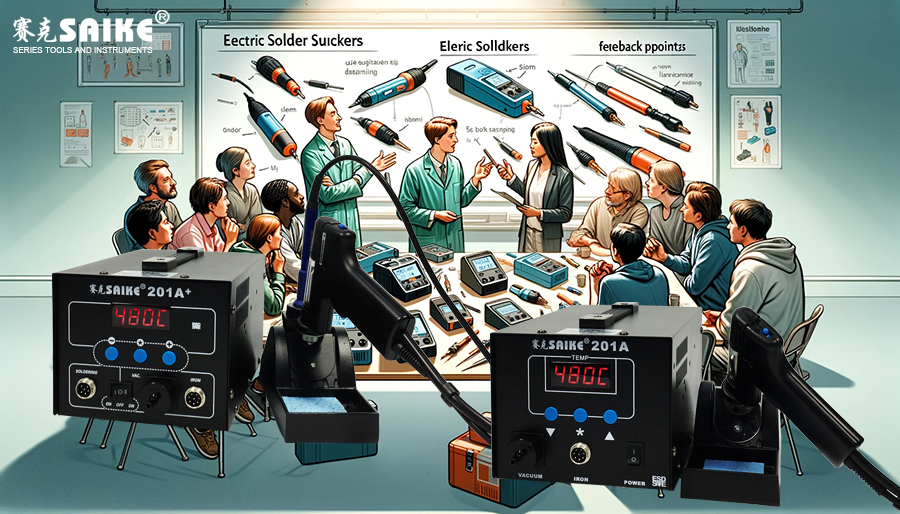
SK-YJ000DDXXQ-KP 100018
The electric solder sucker is a commonly used desoldering tool in soldering work, especially suitable for the field of electronic assembly and maintenance. It helps technicians to repair or replace electronic components by quickly and efficiently removing solder. This article will introduce in detail the strategies and skills of the electric solder sucker when dealing with special solder joints.
I. Basic Working Principle of Electric Solder Sucker
1.Structure and Function
– The electric solder sucker is mainly composed of heating element, suction nozzle, solder suction pump, and control system.
– During operation, the heating element first heats the solder joint to a molten state, and then the molten solder is quickly sucked away by the solder suction pump.
2.Operation Method
– Connect the power supply and preheat the solder sucker to a suitable working temperature.
– Align the suction nozzle with the solder joint that needs to be desoldered, and activate the solder suction pump to suck the molten solder.
II. Processing Technology for Special Solder Joints
Special solder joints usually refer to those solder joints that are inconveniently located, irregularly shaped, or adjacent to sensitive components. Special attention and skills are required to handle these solder joints.
1.Solder Joints Next to High-Density Components
– Use a small and precise suction nozzle to avoid damaging adjacent components.
– Appropriately lower the temperature and suction to avoid overheating or causing physical pulling on surrounding components.
2.Hard-to-Reach Solder Joints
– Use bent or angled suction nozzles for better contact with solder joints.
– If possible, rearrange the circuit board to make the solder joints more accessible.
3.Solder Joints Near Sensitive Components
– Use temperature control function to prevent overheating and damaging sensitive components.
– Use appropriate cooling methods before and after solder sucking, such as fan cooling or coolant.
4.Large Copper Pads or Multilayer Board Solder Joints
– Increase the heating time to ensure that the solder is completely molten.
– Use a solder sucker with greater suction to handle large areas of solder paste suction.
III. Precautions in Practice
1.Preheating and Temperature Control
– Always ensure that the solder sucker has reached a suitable working temperature to avoid cold soldering or unclean solder joints.
– Adjust the temperature to match different solder types and board thicknesses.
2.Selection and Maintenance of Suction Nozzles
– Select appropriate suction nozzles based on the size and location of the solder joints.
– Regularly clean the suction nozzle to prevent solder residue blockage and maintain optimal suction.
3.Operating Skills
– Gently move the solder sucker during the solder sucking process to help more completely remove the solder.
– Regularly check whether the solder joints are clean, and repeat the solder sucking steps if necessary.
IV. Summary
When dealing with special solder joints using an electric solder sucker, it is very important to choose the right tools and techniques. By understanding the specific characteristics of the solder joints and adopting appropriate processing strategies, the efficiency and quality of desoldering can be greatly improved. In addition, reasonable operation and maintenance can also extend the service life of the tool and ensure the smooth progress of maintenance work. When using an electric solder sucker, carefulness and patience are the keys, and appropriate techniques are the guarantee for success.


